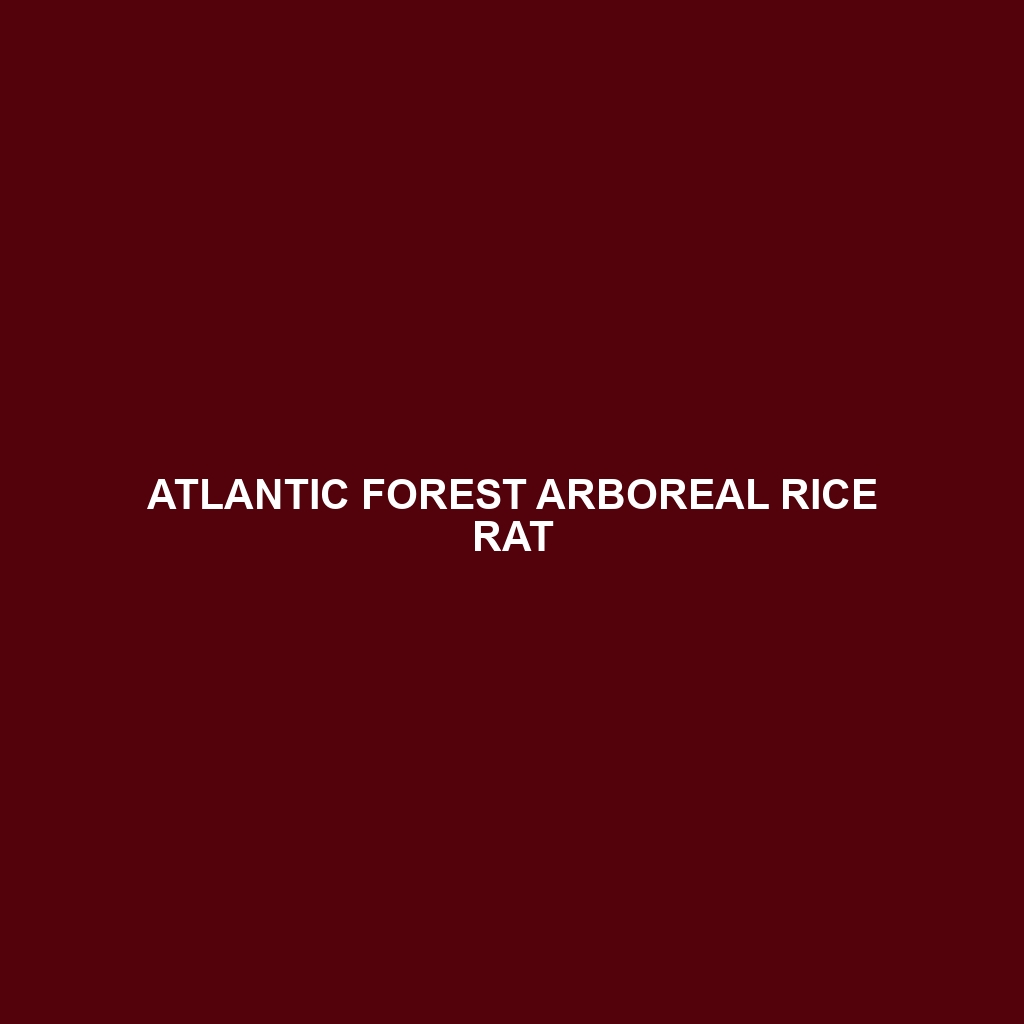Atlantic Forest Arboreal Rice Rat
Common Name: Atlantic Forest Arboreal Rice Rat
Scientific Name: Oecomys bicolor
Habitat
The Atlantic Forest Arboreal Rice Rat is primarily found in the dense, humid rainforests of the Atlantic Forest region in Brazil, Paraguay, and Argentina. These habitats are characterized by their rich biodiversity, towering trees, and shaded understories that provide a perfect environment for this species to thrive. The arboreal nature of the rat means it is often located in tree canopies, where it feels safe from predators.
Physical Characteristics
Typically, the Atlantic Forest Arboreal Rice Rat measures about 25 to 30 cm in length, excluding its bushy tail, which can add an additional 20 cm. It has a distinctively soft and dense fur that is brownish on the back and creamy-white underneath. Its robust body is complemented by large eyes and ears, adapted for its nocturnal lifestyle. This species is often recognized by its long limbs and sharp claws, which aid in climbing and grasping branches.
Behavior
The Atlantic Forest Arboreal Rice Rat exhibits primarily nocturnal behavior, foraging at night. It is known for its agility and climbing skills, being an excellent swimmer as well. Socially, these rats tend to be solitary but may congregate in groups during mating season. Their ability to adapt to their environment is frequently highlighted by their nesting habits, which can range from building nests in tree hollows to utilizing leaf litter on the forest floor.
Diet
The diet of the Atlantic Forest Arboreal Rice Rat mainly consists of fruits, seeds, insects, and small invertebrates. They are known to forage in the canopy, utilizing their sharp incisor teeth to gnaw on woody plants and fruits. This omnivorous diet helps them adapt to varying food availability throughout the year, especially during the leaner months when certain fruits may not be in season.
Reproduction
Reproductive activities for the Atlantic Forest Arboreal Rice Rat usually peak during the wetter months, which provide ample food resources. Females typically give birth to litters of 2 to 6 offspring after a gestation period of approximately 30 days. The young are born helpless, relying heavily on their mother for care and protection during their early weeks of life. Weaning occurs around three weeks post-birth in the safety of tree dens or foliage.
Conservation Status
The Atlantic Forest Arboreal Rice Rat is currently classified as vulnerable due to habitat loss and fragmentation resulting from deforestation and urban development. As the Atlantic Forest continues to be threatened by agricultural expansion and logging, the preservation of this species relies heavily on conservation efforts targeting its natural habitat.
Interesting Facts
This elusive species has the ability to leap between branches, displaying impressive agility not commonly found among rodents. Additionally, their dense fur not only provides insulation but may also serve as camouflage against predators in the complex forest environment.
Role in Ecosystem
The Atlantic Forest Arboreal Rice Rat plays a significant role in its ecosystem by acting as both a seed disperser and a prey species. By consuming fruits and seeds, they help in the propagation of various plant species. Their presence in the food web provides sustenance for larger predators, thus maintaining ecological balance within their forest home.
